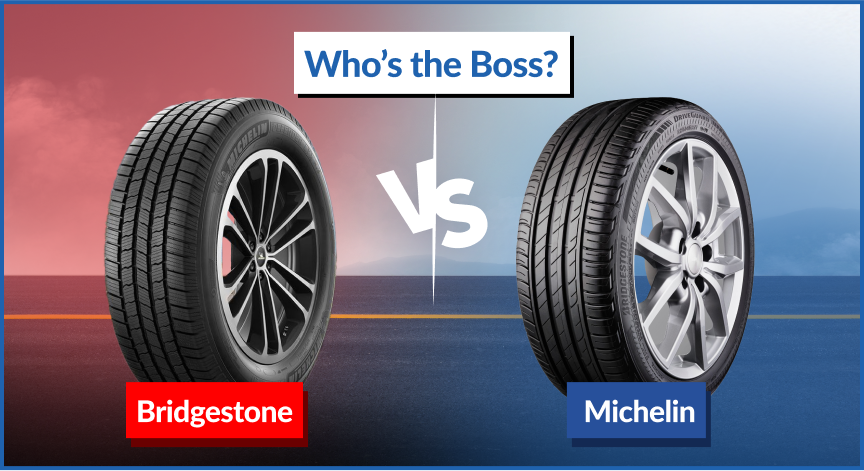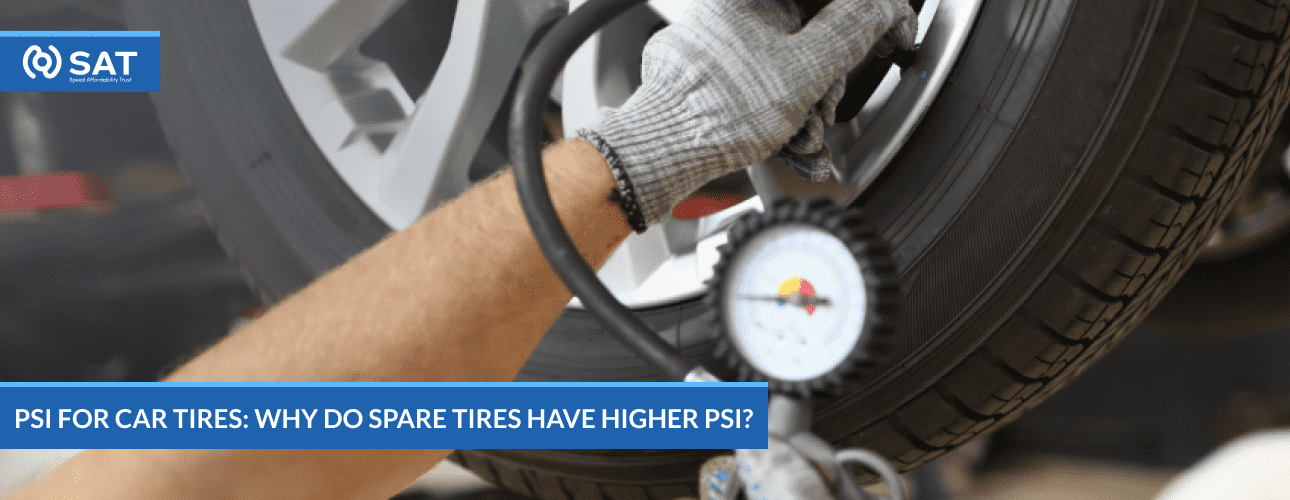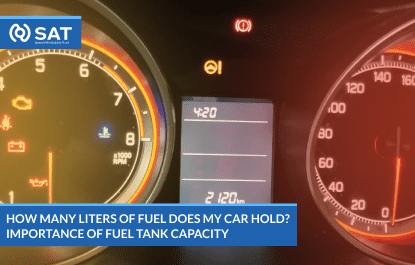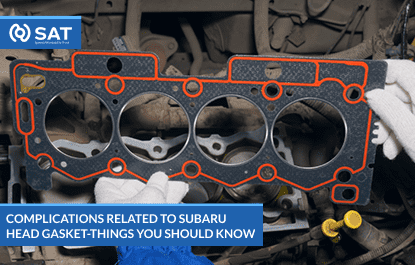
Bridgestone Vs. Michelin Tires – Who’s the Boss
Bridgestone and Michelin are the two industry giants of the tire market.

How much air should I put in my tire or spare tire? This is a question that the majority of people do not think about until they are in the middle of nowhere and need to replace their tire. Because it’s seldom used, spare tires spend years under your truck or attached to the vehicle’s undercarriage, slowly deflating over time. By the time you need to replace your tire, it might already be deflated to a point where it can no longer be used.
If you are ever stranded in the middle of nowhere, you should at least have an idea about the PSI of car tires. Keep on reading to understand what PSI is and how much of it should be in your spare tire.
PSI, or pressure per square inch, tells the minimum amount of pressure necessary to support your vehicle at its maximum load. For safe, smooth, and hassle-free driving, it is important to know the pressure of your vehicle. It often means knowing the amount of PSI that is right for you. Most cars and trucks fall between 27 and 35 PSI, but if you use commercial vehicles, the PSI of the tires can vary.
The size of a spare tire is mostly smaller than a regular tire, and the spare tire’s PSI is about 60 pounds per square inch (PSI). Regular tires have PSI between 30 and 40 PSI. It allows the driver to drive the vehicle until they reach the nearest service station for repairs. If you have spare time with the same size as normal car tires, then you should inflate it to the same pressure as the others.
If your regular tire’s operating pressure is 32 PSI, then your full-size spare tire should also be 32 PSI.
The small spare tire has a reduced size, which causes it to have less contact with the ground. The higher PSI helps compensate for the reduced tire area and also makes for the reduced tire size. Also, the air pressure in spare tires depletes over a period of time. So, if your vehicle had 60 PSI in your tire when you placed in the trunk, it will probably be less when you will need it someday.
There is a speed limit of 50 miles per hour for a spare tire. The spare tires are not designed to travel at high speeds for safety reasons. Therefore, it is preferable to keep the speed under 50 MPH when you are traveling with a spare tire.
Also, do not travel on a small spare tire for more than 50 miles. 50 miles is considered to be the maximum distance for a spare tire. You can only drive up to 70 miles if it’s a must. The role of small spare tire is to just get you to the closest repair shop where it can be replaced.
Here are some of the reasons why you should pay attention to your spare tire’s PSI
An under-inflated tire will affect the gas mileage for every PSI drop. Keeping it inflated will improve your car’s fuel economy.
Spare tires in the trunk are usually smaller in size than the regular ones, so ensuring that they have appropriate PSI can make up for the deficiency. This way, the weight of the vehicle is evenly distributed, making it more stable when driving.
Factors that Affect PSI in Spare Tires
Different factors can have different effects on the air pressure of your tire. Knowing it can help you keep the spare tire in good working condition.
If the tire is older, it will lose air pressure faster than new spare tires, due to puncture and wear and tear.
Air temperature alteration can also affect the PSI of your tire. A 10-degree Fahrenheit temperature increase raises the tire’s pressure by about 1 to 2 PSIs. Simultaneously, a 10-degree temperature drop can reduce it by 1 or 2 PSIs.
Over time, tires naturally lose pressure. However, the process becomes faster if the tire is not maintained or used.
The inflation pressure in the tires should be checked monthly before going on long trips. The PSI requirements in vehicles vary. The T-type temporary spare tire requires approximately 60 PSI. When adjusting the inflation pressure in T-tires, do it in small amounts as the tires are smaller in size, and the pressure level changes rapidly.
A spare tire with no pressure will be of no use to you. If you have an inflatable spare tire, be sure to check its pressure when you check the pressure of other tires.
Also, there are restrictions on speed and mileage when you are driving on a spare tire. It is preferable to check the manual for the use of a temporary spare tire.
If you drive on a spare tire that is under or over-inflated, it can be dangerous for the following reasons:
It is important to regularly check the pressure in your tires, including the spare tire. Always check the tire pressure before any major trip to save yourself from trouble.

Bridgestone and Michelin are the two industry giants of the tire market.

Considering the recent developments in the world order, oil prices have increased significantly over the last decade. During such times, being well-researched about your car fuel tank and its features can be extremely useful in cost-cutting. Knowing about your car’s fuel capacity may not seem too significant at face value, but such a basic factor […]

Subaru is widely known for being a highly reliable manufacturer of vehicles that are simultaneously safe and stylish. Because of Subaru Models‘ performance and reliability, these vehicles have a loyal fanbase that swears by them. However, there are some limitations with their boxer engine, and one of the faults in some Subaru vehicles is the […]